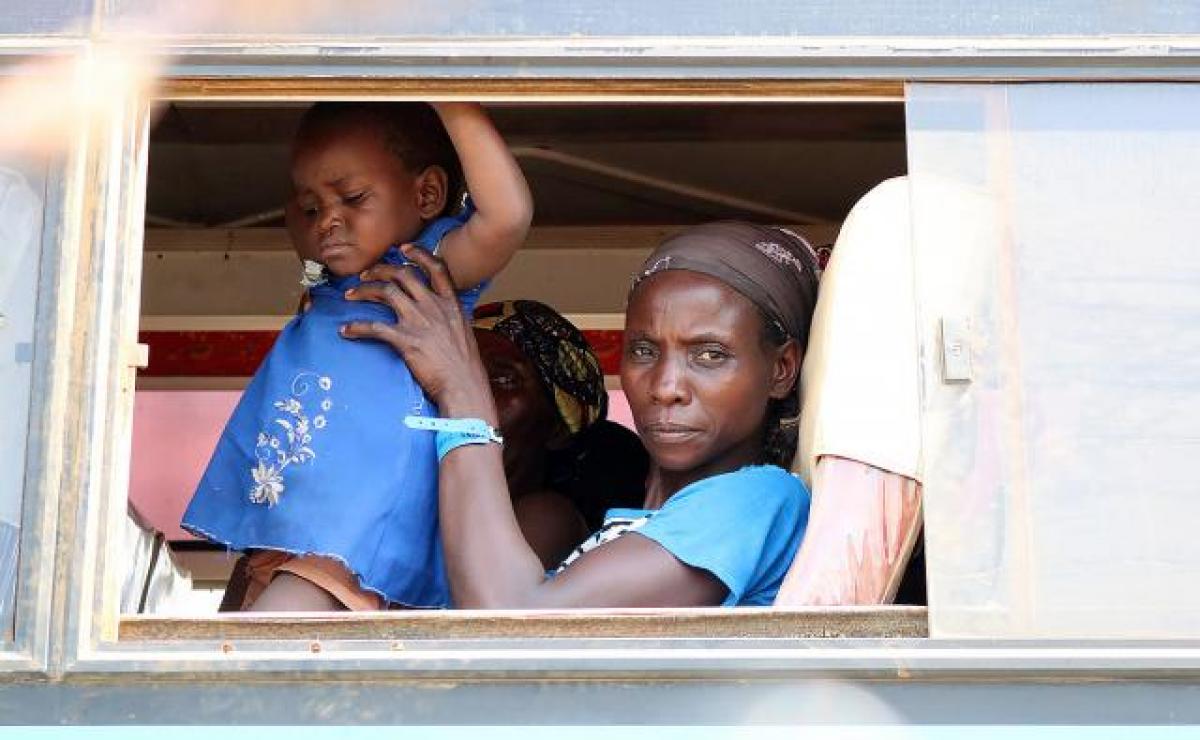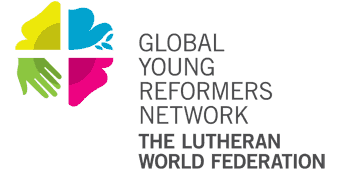Urgent support for DRC refugees needed

Over 2000 people a day crossing border to Uganda
(LWI) - The LWF in Uganda is poised to manage three entry points for refugees fleeing conflict in the Democratic Republic of the Congo, an emergency the UN has labelled critical.
A sharp increase in refugee numbers has seen up to 2000 people crossing the border a day, most on overcrowded boats making the voyage across Lake Albert. On the Congolese side, families are scrambling to get places on the boats. On Thursday, at least 37 boats carrying an average of 50 people each, arrived.
The LWF urges people to support the relief effort. A donation of USD50 can provide a family with an initial hygiene kit and tools to build a household latrine.
Children and young people disembark from a boat at Sebagoro, Uganda, having crossed Lake Albert to flee violence.
Jesse Kamstra, LWF country representative for Uganda and Burundi, saw the packed boats arriving: “I was on the shore of Lake Albert today and personally witnessed the new arrivals arriving by the boatload from Ituri, DRC, some with war wounds. All reported that masses are still waiting to cross. The reception center is over crowded with thousands of refugees.”
Last year, just over 48,200 Congolese arrived in Uganda. In the first six weeks of this year, half that number again (24,700) had arrived, according to the United Nation’s refugee agency, UNHCR.
Kamstra said the need to relieve suffering was significant and that the influx was not expected to abate for several weeks.
LWF builds latrine blocks
Most arrivals land on the shores of Sebagoro, a small fishing village, one of the three sites of LWF operations.
In the four days since the LWF arrived, it has recruited eight people to promote good hygiene at the Sebagoro reception center, built 20 latrine blocks of four stands each at Sebagoro and at another reception site, Malatatu, set up a complaints desk at Sebagoro and installed water tank stands.
Several thousand refugees endure the heat to wait in line at the Kagoma center.
In the coming week, more latrines and water tanks will be built, more hygiene promoters employed and another complaints desk set up. Planning for a store house at Malatatu is underway.
LWF Regional Program Coordinator for East and Horn of Africa officer Lokiru Yohana said the LWF would hire social workers and protection staff at the frontlines to interview and assess refugees and refer them for support: “We were one of the first on the scene. LWF is also responsible for the reception of newly arrived refugees from South Sudan and for managing assistance in several areas in settlements in north Uganda. UNHCR has called on us based on our experience.”
Women at the Kagoma center bear firewood and sack loads of goods.
Refugees deserve all the basics of life
For now, the LWF will focus on providing water and sanitation facilities, refugee protection services and emergency shelter. It is relocating staff and vehicles from other programs to improve the response.
LWFs Programme Support Officer in Uganda, Marvin Wasswa, said the LWF had started rolling out protection services to new arrivals and those in the settlement. “Refugees not only deserve to be welcomed, but to also live in dignity, with access to all basics of life and within humanitarian standards.”
The UN reports that refugees arrive from North Kivu and Iuri provinces saying ethnic violence had reached disturbing levels, with an increase in the number of attacks against civilian populations, killings and destruction of private property.
The UN says it can take an overloaded canoe up to 10 hours to make the journey across Lake Albert, while speed boats can make the crossing in four hours. At about 20,000 Ugandan shillings per person, the cost of the journey is prohibitive for many.
Tragedy on the lake crossing
Timothy Gambo fled his home in Kaafa village, DRC, with his 3-year-old son aboard his fishing canoe. He was joined by two brothers and friends on what was supposed to be a journey to peace and safety in Uganda.
However, after sailing for five hours on Lake Albert, Gambo’s boat capsized, drowning five of the six passengers. “I couldn’t save my brothers and friends, I watched them drown as I swam away with my boy tied on my back.
“I failed my boy, he slipped off my back and I didn’t see him again,” said a distraught Gambo who swam for four hours before reaching the shore at Sebagoro.
New arrivals at Sebagoro are ferried to the Kagoma reception centre in Kyangwali settlement aboard busses. At Kagoma, they are registered before being allocated plots in Malembo, Mombasa and Maratatu areas within the Kyangwali refugee resettlement.
Refugees wait with piles of belongings at the Kagoma refugee center.
Women and children at the Kagoma reception center wear bracelets indicating they have been registered as new arrivals.
Two women and a child wait at the Kagoma reception center.
